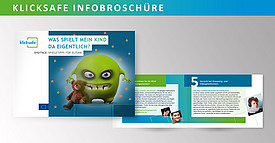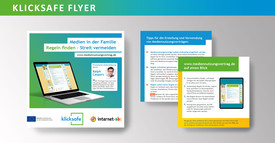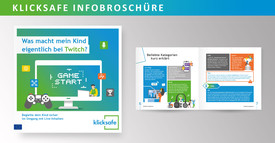Expert opinion on excessive usePlaying popular games with inexperienced children

Originally, games providers earned their money by selling games on data carriers such as DVDs. Although this business model still exists, it is increasingly being replaced by digital distribution channels. The free-to-play model has proven to be particularly profitable. Here, the game can be purchased free of charge. A simple download is all it takes and players can start playing straight away. The providers of these games generate revenue primarily when users spend a lot of time in the game and spend money in in-game stores. As a result, current online games are increasingly using manipulative game mechanics (also known as dark patterns) to lure customers to their screens. These customers include many children and young people. They are particularly susceptible to manipulative designs because they have limited impulse control due to their stage of development.
In addition, video games are a huge part of current youth culture and the leisure behavior of minors. According to the JIM study, 72% of young people aged between 12 and 19 used digital games daily or several times a week in 2023. On average, they spent 1.5 hours a day playing games. Boys play games for an average of 119 minutes a day, almost twice as long as girls at 61 minutes. Only eight percent of twelve to 19-year-olds state that they never play digital games. According to the JIM Study 2023, the most popular games include "Minecraft", "Fortnite" and "FIFA", which were examined in the KJM report now available. Among other things, these games were tested for the following manipulative designs
- Push messages
- Reward for daily play
- Rewards for watching advertisements
- Punishment for not playing
- In-app purchases
- Permanent promotion of a store
- Use of friends and leaderboards
The study showed that the games popular with children in particular are riddled with manipulative content. They encourage excessive use of these games and increase the likelihood of real money being spent in the game.
In three of the ten games examined (FIFA, League of Legends and Modern Ops), other gambling-like elements such as paid loot boxes were particularly problematic. These are offered in the form of safes, treasure chests or similar, without it being known whether the desired item is actually included. According to current research, loot boxes can promote both problematic gaming and problematic gambling behavior in children and young people.
Listening tip: Are mobile games manipulating our children?
Transparent game time information and winning opportunities
Elements such as reliable technical age controls, transparent game time information or information on financial expenditure and winning opportunities for loot boxes could have a risk-reducing effect. The KJM report comes to the conclusion that all games use at least minor approaches to reduce risk. However, according to the researchers, these are often difficult to find. On a positive note, age restrictions are in place if children state their correct age. In most cases, however, the age restrictions can be circumvented by giving the wrong age.
The Entertainment Software Self-Regulation Body (USK), which is responsible for age ratings, introduced new testing rules in January 2023. These now also take into account risks of use in the form of dark patterns and precautionary measures when awarding age ratings, which may result in a higher age rating. One example of this is the game "EA Sports FC" (successor to "FIFA"), which has now been given an age rating of "from 12 years". Additional information (so-called descriptors) is also issued to increase transparency and guidance.
How can parents protect their children?
The KJM report comes to the conclusion that, in addition to self-regulation by the games industry and external regulation, for example by state actors, media literacy promotion and prevention are of great importance in order to protect children and young people. The following klicksafe services will help you to support and protect your children in the world of digital games.
In our text we use parts of this press release from the Commission for the Protection of Minors from Harmful Media.











